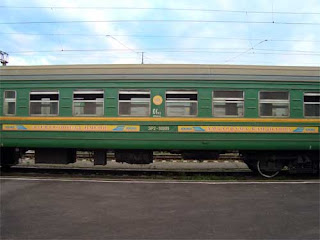
Armenia and Iran After the Nuclear Deal: The Quest for Broader Cooperation
By Erik Davtyan
The agreement on Iran’s nuclear program, which Tehran reached with the P5+1 powers (the United States, the United Kingdom, France, China, Russia and Germany) on July 14, has provided new perspectives for Iran’s wider engagement in the South Caucasus—especially with Armenia, the only state in the region that actively promotes a close partnership with the Islamic Republic.
In August 2015, Iran and Armenia had already signed an agreement on the construction of the third high-voltage electricity transmission line connecting the two countries. This new planned electricity link will cost an estimated $120 million (Azatutyun.am, August 13). The Iranian nuclear agreement and the promised gradual lifting of sanctions apparently increased mutual interest in maintaining a more active political dialogue and reinforcing economic cooperation between Iran and Armenia. These issues were discussed during last month’s (September 17) meeting between Armenian Ambassador to Tehran Artashes Tumanyan and Iranian Minister of Industry, Mines and Trade Mohammad Reza Nematzadeh (Armenpress.am, September 18). The energy aspect of bilateral relations was discussed on October 3–5, when the Armenian delegation, headed by Minister of Energy and Natural Resources Ervand Zakharyan, visited Iran and held talks with the co-chair of the Armenian-Iranian Intergovernmental Commission, Hamid Chitchian, Iranian Oil Minister Bijan Zangane, and the chairman of Iran’s Export Development Bank, Ali Salehabadi (Minenergy.am, October 5).
The next and, in fact, the most important recent event (after the nuclear deal) for bilateral Iranian-Armenian relations was the official visit to Yerevan of the First Vice President of Iran Eshaq Jahangiri (October 14–15). After Iranian then-president Mahmoud Ahmadinejad’s visit in 2011, this is the highest-level visit to Armenia by an Iranian official. At the airport, Jahangiri was welcomed by Armenian Prime Minister Hovik Abrahamyan, along with the ministers of energy and natural resources, culture, and transport and communications, as well as the deputy minister of foreign affairs. Clearly, the Armenian authorities attached great importance to this official visit and expect positive developments in bilateral relations (Armenpress.am, October 14).
On October 15, Jahangiri and Abrahamyan took part in the Armenia-Iran Business Forum, which was attended by nearly 300 Armenian and 80 Iranian businessmen. Commenting on the importance of boosting trade relations, the Iranian vice president stated that “it is important for us to sign a number of memorandums of understanding, including a preferential tariff agreement” (Gov.am, October 15). As to Armenia’s transit role in Iran’s foreign policy, he underlined that “Armenia is the only country to provide a gateway for exporting Iranian goods toward the Eurasian Economic Union. Besides, Armenia has an important role to play as a transit zone. We have the North–South Transport Corridor; we should settle the railroad issue, which is of regional significance”. Vice Presdent Jahangiri also held meetings with Armenian President Serzh Sargsyan and the president of the Armenian National Assembly (parliament), Galust Sahakyan.
Certainly, the realization of joint economic plans highly depends on completing large-scale transport projects to more fully connect the two states. The North–South Road Corridor is already under construction; but the Iran-Armenia railway project faces financial challenges. In his interview to Azatutyun, Iranian Minister of Transport Abbas Ahmad Akhoundi said that Iran is ready to start the construction of the Iranian part of the railroad as soon as Armenia covers at least one third of the estimated cost of $3 billion for this project (Azatutyun.am, October 15). Indeed, the railway may have regional and even interregional importance; therefore, Armenia aims to attract large investments from abroad. Back in June 2015, the China Civil Engineering Construction Corporation (CCECC) had expressed interest in this project. During the Armenian prime minister’s recent visit to China (in September), the issue of the possible engagement of Chinese companies was discussed with the premier of China’s State Council, Li Keqiang, and the chairman of the CCECC, Wu Wanliang (Panarmenian.net, September 22).
So far, no practical agreement has been reached on the Iran-Armenia railway project. Yet, following the breakthrough of the Iranian nuclear program accord, the chances of realizing this project have increased, at least in the political realm. Thus, the appeal of large-scale investments in bilateral projects will continue to grow over the coming months for both Armenia and Iran.




